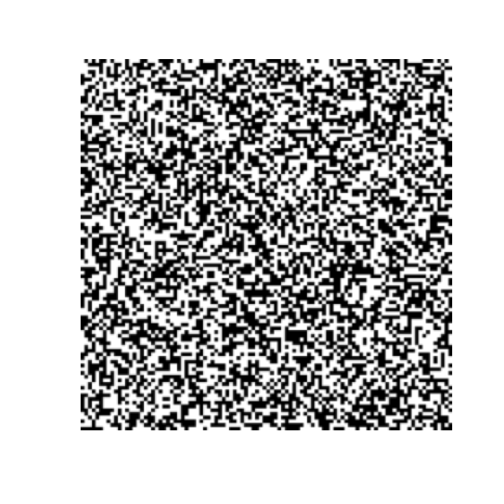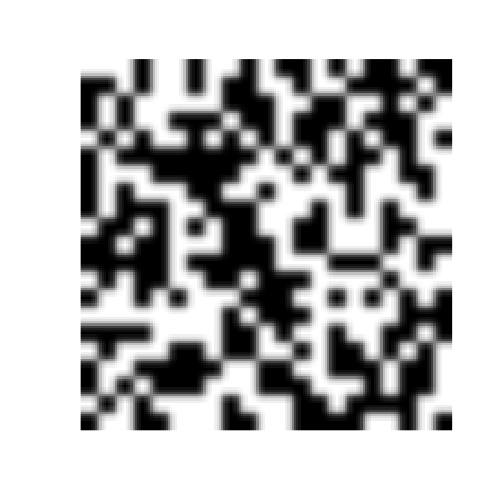class: center, middle, inverse, title-slide # 2018-02-05 Depth Perception ## PSY 525.001 • Vision Science • 2018 Spring ### Rick Gilmore ### 2018-02-05 14:23:53 --- --- class: center, middle <iframe width="560" height="315" src="https://www.youtube.com/embed/spUNpyF58BY?rel=0" frameborder="0" allow="autoplay; encrypted-media" allowfullscreen></iframe> --- # Today's topics -- ## Discuss project proposal -- ## Depth perception -- ## Discuss Leopold & Logothetis, N. K. (1996). --- class: center, middle, inverse ## Term project --- class: center, middle <http://psu-psychology.github.io/psy-525-vision-spring-2018/project-proposal.html> --- class: center, middle # Perceiving surfaces orientation (spatial layout) ## Slant, tilt, distance --- class: center, middle <img src="https://www.researchgate.net/profile/Ari_Rosenberg/publication/259201603/figure/fig2/AS:297324476682240@1447899087131/Figure-2-Slant-tilt-representation-of-planar-surface-orientation-A-The-slant-and-tilt.png" width=800px> --- class: center, middle <img src="http://cns-alumni.bu.edu/~slehar/webstuff/pcave/marr.jpg"/> <img src="https://encrypted-tbn0.gstatic.com/images?q=tbn:ANd9GcRQCOaEsPn4zZ_ht7Nc_8teEm_cd6IiSQ5Z25_CtDkn7aagdsBF"/> ## Marr's 2.5 D sketch --- class: center, middle <img src="https://images-na.ssl-images-amazon.com/images/I/81oIIqldheL.jpg" height=500px/> --- class: center, middle, inverse # Depth perception --- class: center, middle >*"For those of a creationist bent, one could note that God must have loved depth cues, for He made so many of them"* Yonas & Granrud, 1985, p. 45 --- class: middle, center ## Kinetic ## Binocular ## Static (pictoral) ## Sensorimotor --- class: center, middle ## Monocular (kinetic, static, some sensorimotor) vs. binocular cues --- class: center, middle ## Kinetic cues to depth --- class: center, middle <iframe width="560" height="315" src="https://www.youtube.com/embed/mkhY5lANs-k?rel=0" frameborder="0" allow="autoplay; encrypted-media" allowfullscreen></iframe> ## [Kinetic depth effect (KDE)](https://en.wikipedia.org/wiki/Kinetic_depth_effect) --- class: center, middle <p><a href="https://commons.wikimedia.org/wiki/File:Spinning_Dancer.gif#/media/File:Spinning_Dancer.gif"><img src="https://upload.wikimedia.org/wikipedia/commons/2/21/Spinning_Dancer.gif" alt="Spinning Dancer.gif"></a><br>By <a rel="nofollow" class="external text" href="http://procreo.jp/about.html">Nobuyuki Kayahara</a> - <a rel="nofollow" class="external text" href="http://procreo.jp/labo/labo13.html">Procreo Flash Design Laboratory</a>, <a href="https://creativecommons.org/licenses/by-sa/3.0" title="Creative Commons Attribution-Share Alike 3.0">CC BY-SA 3.0</a>, <a href="https://commons.wikimedia.org/w/index.php?curid=3526328">Link</a></p> This one is also bistable --- class: middle, center ## Kinetic depth effect 3D structure perceived from temporal sequence of 2D (outline-only) views. Reported in Wallach, H., & O’Connell, D. N. (1953). The Kinetic Depth Effect. *Journal of Experimental Psychology*, *45*(4), 205. --- class: middle, center <iframe width="560" height="315" src="https://www.youtube.com/embed/RdwU28bghbQ?rel=0" frameborder="0" allow="autoplay; encrypted-media" allowfullscreen></iframe> ## Structure from motion --- class: middle, center <iframe width="560" height="315" src="https://www.youtube.com/embed/bVSaWXqQh0w?rel=0" frameborder="0" allow="autoplay; encrypted-media" allowfullscreen></iframe> ## Motion parallax --- class: middle, center <iframe width="560" height="315" src="https://www.youtube.com/embed/tEacVpOZ1xk?rel=0" frameborder="0" allow="autoplay; encrypted-media" allowfullscreen></iframe> --- class: middle, center <img src="http://www.yorku.ca/hono/parallax_demo/Fig3.jpg"/> ## The geometry of motion parallax Where is fixation? What is the direction of motion? --- class: center, middle <iframe width="560" height="315" src="https://www.youtube.com/embed/SWDXcrZtkqY?rel=0" frameborder="0" allow="autoplay; encrypted-media" allowfullscreen></iframe> ## Texture accretion & deletion --- class: center, middle <iframe width="560" height="315" src="https://www.youtube.com/embed/tGJYSIBETho" frameborder="0" allow="autoplay; encrypted-media" allowfullscreen></iframe> ## Texture accretion & deletion --- class: center, middle <iframe width="560" height="315" src="https://www.youtube.com/embed/cGIpSHw7evg?rel=0" frameborder="0" allow="autoplay; encrypted-media" allowfullscreen></iframe> # Optic flow --- class: center, middle <iframe width="560" height="315" src="https://www.youtube.com/embed/V4r2HXGA8jw" frameborder="0" allow="autoplay; encrypted-media" allowfullscreen></iframe> ## Optic flow and autonomous flight --- class: center, middle ## Binocular cues to depth --- class: center, middle ## Stereopsis Perception of depth and 3D structure from stimulation of both eyes --- class: center, middle <img src="https://www.researchgate.net/profile/Johannes_Burge/publication/50907225/figure/fig2/AS:394331463667730@1471027355489/Figure-14-Geometric-and-empirical-horizontal-horopters-Circles-represent-the-left-and.png"> ## Horopter a line or surface containing all those points in space whose images fall on corresponding points of the retinas of the two eyes. --- class: center, middle <img src="http://slideplayer.com/slide/4713192/15/images/33/Crossed+and+Uncrossed+Retinal+Disparity.jpg"/> ## Retinal disparity Retinal image positions are "disparate" or different --- class: center, middle ## [Random-dot stereograms](https://en.wikipedia.org/wiki/Random_dot_stereogram) Invented by [Béla Julesz](https://en.wikipedia.org/wiki/B%C3%A9la_Julesz) --- class: center, middle <img src="https://www.researchgate.net/profile/Matthias_Bethge/publication/221619059/figure/fig1/AS:277371451133956@1443141916054/Figure-1-Left-Example-random-dot-stereogram-RDS-Right-Illustration-of-bincular.png"/> --- ```r library(imager) n_pts <- 100 left_img <- array(round(runif(n=n_pts^2),0), dim = c(n_pts, n_pts)) plot(as.cimg(left_img), axes=FALSE) ``` <!-- --> --- ```r right_img <- left_img square_pix <- 20 center_square <- right_img[floor(n_pts/2-square_pix/2):floor(n_pts/2+square_pix/2),floor(n_pts/2-square_pix/2):floor(n_pts/2+square_pix/2)] plot(as.cimg(center_square), axes=FALSE) ``` <!-- --> <!-- --- --> <!-- ```{r rds_3} --> <!-- shift_pix <- 5 --> <!-- right_img[floor(n_pts/2) - shift_pix:floor(n_pts/2) - shift_pix + square_pix, floor(n_pts/2-square_pix/2):floor(n_pts/2+square_pix/2)] <- center_square --> <!-- plot(as.cimg(right_img), axes=FALSE) --> <!-- ``` --> --- class: center, middle <img src="https://www.eduhk.hk/has/vrdemo/rds/iloveu.gif"> ## Auto-stereogram Can't really fuse these from *projected* image. Why? --- class: center, middle <img src="http://www.evolbiol.ru/docs/img/images/p228.gif"/> ## The "correspondence" problem How do retinal image points/edges correspond to object points/edges? Why can it take time to "fuse" stereograms? --- class: center, middle <img src="http://images.slideplayer.com/15/4713027/slides/slide_3.jpg"/> --- class: center, middle ## Marr-Poggio algorithm for solving Use: surface opacity & surface continuity heuristics Iterate until a best-fitting solution is found --- class: center, middle <img src="http://jov.arvojournals.org/data/Journals/JOV/933541/i1534-7362-13-2-16-f01.jpeg"/> ## Da Vinci stereopsis Different eyes see different portions of surfaces --- class: center, middle <img src="http://www.swarthmore.edu/SocSci/fdurgin1/DPX/DP-fig1.gif"/> ## Geometry of self-motion, object-motion, and disparity Durgin, F. H., Proffitt, D. R., Olson, T. J., & Reinke, K. S. (1995). Comparing depth from motion with depth from binocular disparity. Journal of experimental psychology. Human perception and performance, 21(3), 679–699. psycnet.apa.org. Retrieved from https://www.ncbi.nlm.nih.gov/pubmed/7790841 --- class: center, middle ## Static (pictoral) cues to depth --- class: center, middle ## Linear Perspective --- class: center, middle <img src="https://i1.wp.com/teresabernardart.com/wp-content/uploads/2016/01/Linear_Perspective.jpg"> --- class: center, middle <img src="http://www.cns.nyu.edu/~david/courses/perception/lecturenotes/depth/depth-slides/Slide31.jpg"> --- class: center, middle <p><a href="https://commons.wikimedia.org/wiki/File:Ponzo_illusion.gif#/media/File:Ponzo_illusion.gif"><img src="https://upload.wikimedia.org/wikipedia/commons/0/02/Ponzo_illusion.gif" alt="Ponzo illusion.gif"></a><br>Public Domain, <a href="https://commons.wikimedia.org/w/index.php?curid=1211098">Link</a></p> ## Linear perspective + elevation over horizon = [Ponzo illusion](https://en.wikipedia.org/wiki/Ponzo_illusion) --- class: center, middle ## Relative size --- class: center, middle <img src="http://www.cns.nyu.edu/~david/courses/perception/lecturenotes/depth/depth-slides/Slide33.jpg"/> --- class: center, middle <img src="http://www.cns.nyu.edu/~david/courses/perception/lecturenotes/depth/depth-slides/Slide33.jpg"/> --- class: center, middle <iframe width="560" height="315" src="https://www.youtube.com/embed/3t5qQB-FuJg?rel=0" frameborder="0" allow="autoplay; encrypted-media" allowfullscreen></iframe> ## [Ames room](https://en.wikipedia.org/wiki/Ames_room) --- class: center, middle <img src="https://upload.wikimedia.org/wikipedia/commons/8/88/Ames_room.svg"/> <https://en.wikipedia.org/wiki/Ames_room> --- class: center, middle ## [Aerial perspective](https://en.wikipedia.org/wiki/Aerial_perspective) ## Defocus blur --- class: center, middle <p><a href="https://commons.wikimedia.org/wiki/File:SerraEstrela-MAR2007-5.jpg#/media/File:SerraEstrela-MAR2007-5.jpg"><img src="https://upload.wikimedia.org/wikipedia/commons/thumb/1/10/SerraEstrela-MAR2007-5.jpg/1200px-SerraEstrela-MAR2007-5.jpg" alt="SerraEstrela-MAR2007-5.jpg" height=450px></a><br>By <a href="//commons.wikimedia.org/wiki/User:Alvesgaspar" title="User:Alvesgaspar">Joaquim Alves Gaspar</a> - <span class="int-own-work" lang="en">Own work</span>, <a href="https://creativecommons.org/licenses/by-sa/2.5" title="Creative Commons Attribution-Share Alike 2.5">CC BY-SA 2.5</a>, <a href="https://commons.wikimedia.org/w/index.php?curid=1869570">Link</a></p> --- class: center, middle <img src="https://eet-330.wikispaces.com/file/view/Picture1.jpg/142684553/432x576/Picture1.jpg" height=450px> ## Interposition, occultation --- class: center, middle ## Texture gradients --- class: center, middle <p><a href="https://commons.wikimedia.org/wiki/File:Gustave_Caillebotte_-_Paris_Street;_Rainy_Day_-_Google_Art_Project.jpg#/media/File:Gustave_Caillebotte_-_Paris_Street;_Rainy_Day_-_Google_Art_Project.jpg"><img src="https://upload.wikimedia.org/wikipedia/commons/thumb/1/17/Gustave_Caillebotte_-_Paris_Street%3B_Rainy_Day_-_Google_Art_Project.jpg/1200px-Gustave_Caillebotte_-_Paris_Street%3B_Rainy_Day_-_Google_Art_Project.jpg" alt="Gustave Caillebotte - Paris Street; Rainy Day - Google Art Project.jpg"></a><br>By <a href="https://en.wikipedia.org/wiki/en:Gustave_Caillebotte" class="extiw" title="w:en:Gustave Caillebotte">Gustave Caillebotte</a> - <a rel="nofollow" class="external text" href="//www.google.com/culturalinstitute/asset-viewer/5wEUCOlEf-EaVQ">5wEUCOlEf-EaVQ at Google Cultural Institute</a> maximum zoom level, Public Domain, <a href="https://commons.wikimedia.org/w/index.php?curid=21909139">Link</a></p> --- class: center, middle <img src="http://www.cs.ru.nl/~ths/rt2/col/h9/texture-gradient.jpg"/> --- class: center, middle <img src="http://4.bp.blogspot.com/-gj6X_o7gnus/TkpNIgneXmI/AAAAAAAACa4/svFEyr1djeM/s1600/texture_gradient.jpg"/> <http://psychsciencenotes.blogspot.com/2011/08/mirrors-are-literally-windows-to.html> --- class: center, middle ## Lighting, shading, & shadow cues --- class: center, middle <img src="http://www.cns.nyu.edu/~david/courses/perception/lecturenotes/depth/depth-slides/Slide28.jpg"/> --- class: center, middle <img src="http://www.skidmore.edu/~hfoley/PercLabs/images/bumps3.gif"/> --- class: center, middle <img src="http://art.nmu.edu/groups/cognates/wiki/7cbf8/images/10a8d.jpg"/> --- class: center, middle # Sensorimotor cues to depth ## Palmer's "ocular" cues --- class: center, middle <img src="http://cns-alumni.bu.edu/~slehar/webstuff/pcave/vergence.jpg"/> ## Vergence Eyes (typically) *converge* on a 3D point. Angle of vergence related to 3D geometry. --- class: center, middle <iframe width="560" height="315" src="https://www.youtube.com/embed/fXd3L4izfQI?rel=0" frameborder="0" allow="autoplay; encrypted-media" allowfullscreen></iframe> ## Accommodation --- class: middle, center <<iframe width="560" height="315" src="https://www.youtube.com/embed/IsoHFoY5q7o?rel=0" frameborder="0" allow="autoplay; encrypted-media" allowfullscreen></iframe> ## Vergence, pupil diameter change, + accommodation --- class: middle, center <iframe width="560" height="315" src="https://www.youtube.com/embed/P3aYqxGesqs?rel=0" frameborder="0" allow="autoplay; encrypted-media" allowfullscreen></iframe> ## Vestibular system detects head rotation, translation --- class: center, middle ## Vestibular signals speed, direction of rotation, translation ## More motion parallax with head translation than rotation --- class: center, middle <img src="https://www.researchgate.net/profile/Azam_Khan/publication/220306688/figure/fig3/AS:276940566089744@1443039184981/Fig-3-A-graph-depicting-the-effectiveness-of-real-world-depth-cues-Adapted-from-JE.png"> ## Comparing the cues --- class: center, middle <iframe width="560" height="315" src="https://www.youtube.com/embed/mKGWAIHkmyk?rel=0" frameborder="0" allow="autoplay; encrypted-media" allowfullscreen></iframe> ## Integrating the cues Welchman, A. E. (2016). The human brain in depth: how we see in 3D. *Annual Review of Vision Science*. annualreviews.org. Retrieved from http://www.annualreviews.org/doi/abs/10.1146/annurev-vision-111815-114605 --- class: center, middle # Heuristics ## About world, illumination conditions --- class: center, middle >*"Only in the vision scientist's laboratory or under other conditions designed specifically to deceive the visual system do we regularly fail to apprehend the actual distance to environmental surfaces."* Palmer, 1999, p. 202 --- class: center, middle <p><a href="https://commons.wikimedia.org/wiki/File:Vertical%E2%80%93horizontal_illusion.png#/media/File:Vertical%E2%80%93horizontal_illusion.png"><img src="https://upload.wikimedia.org/wikipedia/commons/3/30/Vertical%E2%80%93horizontal_illusion.png" alt="Vertical–horizontal illusion.png"></a><br>By <a href="//commons.wikimedia.org/w/index.php?title=User:S-kay&action=edit&redlink=1" class="new" title="User:S-kay (page does not exist)">S-kay</a> - <span class="int-own-work" lang="en">Own work</span>, Public Domain, <a href="https://commons.wikimedia.org/w/index.php?curid=8845534">Link</a></p> --- class: center, middle <img src="http://www.pnas.org/content/pnas/99/20/13184/F1.large.jpg" height=450px> ## Vertical lines seem longer than horizontal ones Vertical-horizontal illusion --- class: center, middle <img src="http://www.pnas.org/content/pnas/99/20/13184/F2.large.jpg" height=450px> ## Reflects statistics of visual experience? --- class: center, middle <img src="http://www.pnas.org/content/pnas/99/20/13184/F3.large.jpg" height=450px> Howe, C. Q., & Purves, D. (2002). Range image statistics can explain the anomalous perception of length. Proceedings of the National Academy of Sciences of the United States of America, 99(20), 13184–13188. Retrieved from http://dx.doi.org/10.1073/pnas.162474299 --- class: center, middle <img src="http://www.annualreviews.org/na101/home/literatum/publisher/ar/journals/content/psych/2008/psych.2008.59.issue-1/annurev.psych.58.110405.085632/production/images/large/ps590167.f6.jpeg" height=450px> Geisler, W. S. (2008). Visual Perception and the Statistical Properties of Natural Scenes. *Annual Review of Psychology*, *59*(1), 167–192. Retrieved April 17, 2012, from http://www.annualreviews.org/doi/abs/10.1146/annurev.psych.58.110405.085632 --- class: center, middle <img src="http://imagebank.osa.org/getImage.xqy?img=OG0kcC5mdWxsLGpvc2FhLTIwLTctMTI5Mi1nMDA3&article=josaa-20-7-1292-g007" height=450px/> Potetz, B., & Lee, T. S. (2003). Statistical correlations between two-dimensional images and three-dimensional structures in natural scenes. *Journal of the Optical Society of America. A, Optics, image science, and vision*, *20*(7), 1292–1303. Retrieved from https://www.ncbi.nlm.nih.gov/pubmed/12868635 --- class: center, middle, inverse <iframe width="560" height="315" src="https://www.youtube.com/embed/A4QcyW-qTUg?rel=0" frameborder="0" allow="autoplay; encrypted-media" allowfullscreen></iframe> --- class: center, middle, inverse # Break time --- class: center, middle, inverse # Leopold & Logothetis, N. K. (1996) --- # Core phenomena - Binocular rivalry - Neural basis of binocular rivalry - Neural basis of "conscious" visual experience --- # Next time... ## Perceptual organization ## Size, shape, orientation, & position --- class: center, middle Slides created via the R package [**xaringan**](https://github.com/yihui/xaringan). Rendered HTML and supporting files are pushed to GitHub where GitHub's 'pages' feature is used to host and serve the course website.